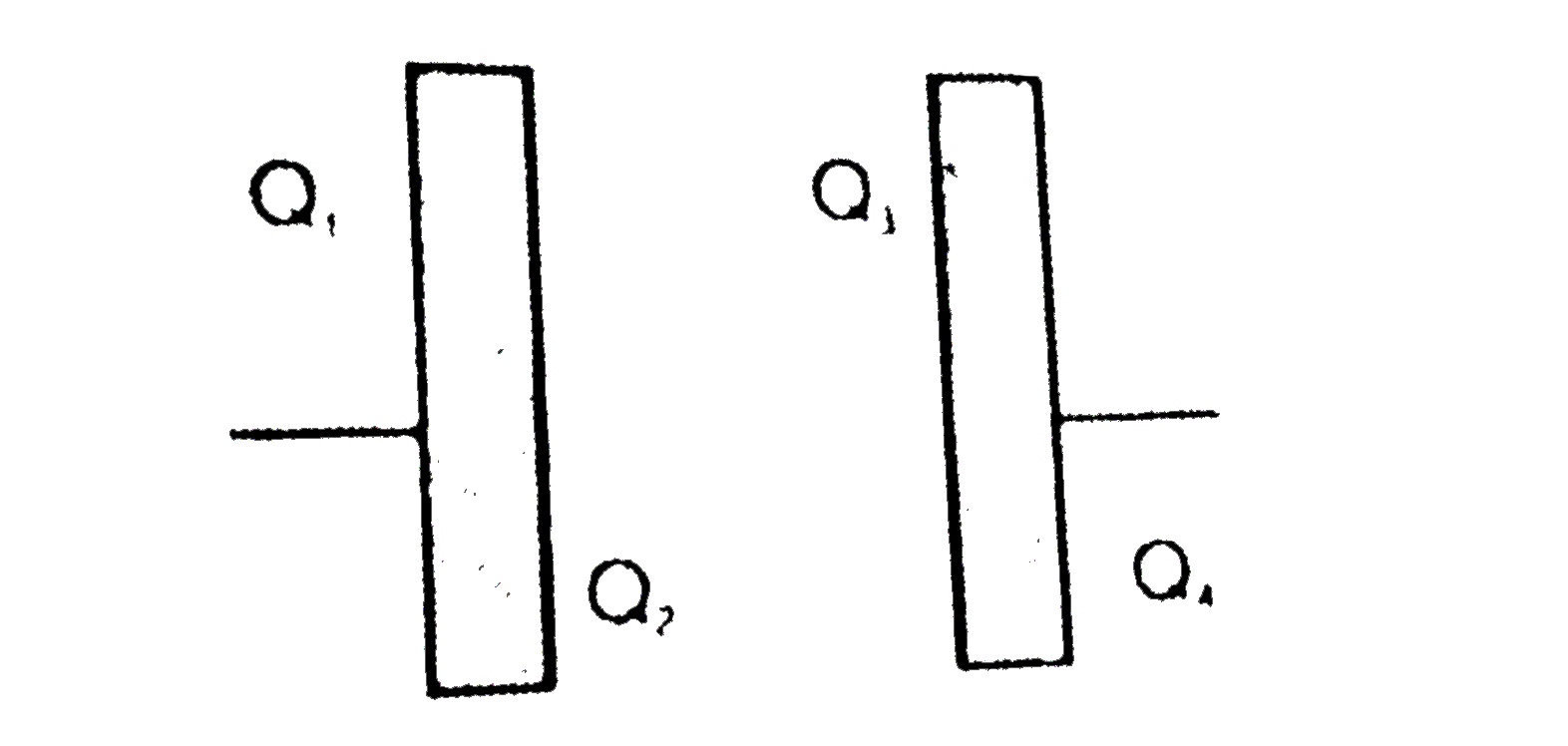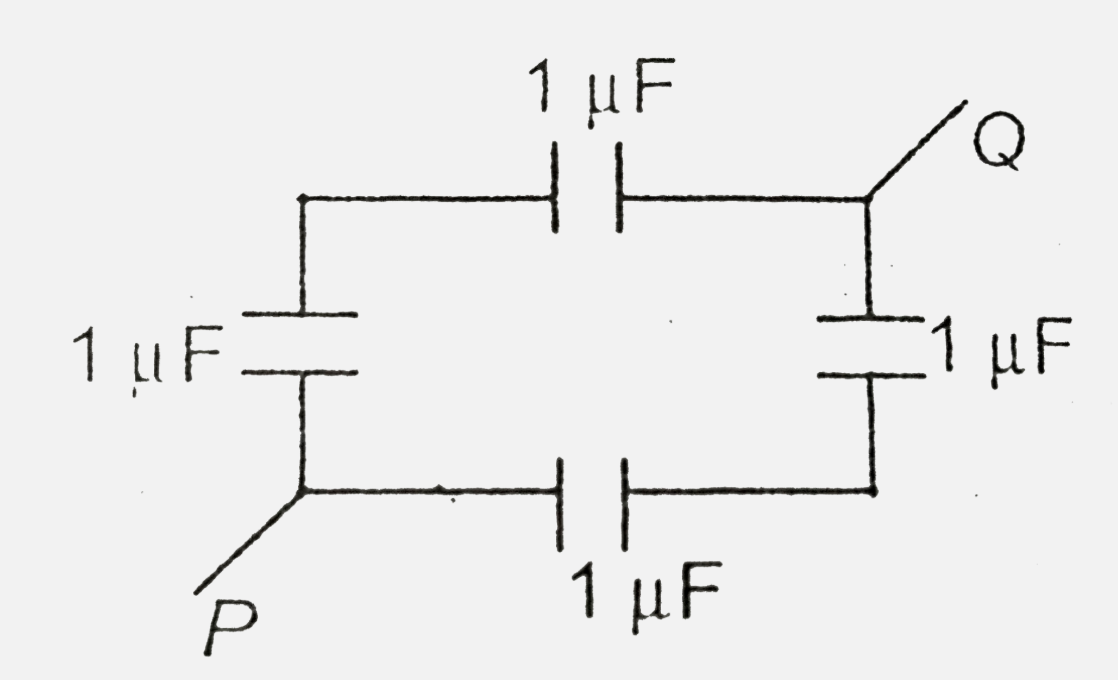In an isolated parallel plate capacitor of capacitance C the four surfaces have charges Q1,Q2,Q3 and Q4 as shown in the figure. The potential difference between the plates is :

We must be aware that for a given system in isolated state q1 must be equal to q4 and these two surfaces will not affect potential difference between the plates. Apart from that we must be aware of the fact that in an electrostatic condition, metal surfaces parallel to such other carry equal and opposite charges on surfaces facing each other hence q2=−q3. Potential difference between the plates can be written using q = CV for the capacitor.
V=|q2|C=|q3|C
Topper's Solved these Questions
- ELECTROSTATIC POTENTIAL AND CAPACITANCE Book:MODERN PUBLICATIONChapter:ELECTROSTATIC POTENTIAL AND CAPACITANCE Exercise:Revision Exercises (Very Short Answer Questions)
Explore 56 Videos
- ELECTROSTATIC POTENTIAL AND CAPACITANCE Book:MODERN PUBLICATIONChapter:ELECTROSTATIC POTENTIAL AND CAPACITANCE Exercise:Revision Exercises (Additional Questions)
Explore 10 Videos
- ELECTROSTATIC POTENTIAL AND CAPACITANCE Book:MODERN PUBLICATIONChapter:ELECTROSTATIC POTENTIAL AND CAPACITANCE Exercise:NCERT FILE Solved (Exemplar Problems) (Short Answer Type Questions)
Explore 5 Videos
- ELECTROMAGNETIC WAVESBook:MODERN PUBLICATIONChapter:ELECTROMAGNETIC WAVESExercise:CHAPTER PRACTICE TEST
Explore 14 Videos
- MAGNETISM AND MATTERBook:MODERN PUBLICATIONChapter:MAGNETISM AND MATTERExercise:CHAPTER PRACTICE TEST FOR BOARD EXAMINATION
Explore 16 Videos
Similar Questions
For an isolated parallel plate capacitor of capacitance C and potential difference V, what will be change in (i) charge on the plates (ii) potential difference across the plates (iii) electric field between the plates (iv) energy stored in the capacitor, when the distance between the plates is increased ?
View SolutionA parallel plate capacitor has capacitance C. If the charges of the plates are Q and −3Q, find of the

i. charges at the inner surfaces of the plates
ii. Potential difference between the plates
iii. charge flown if the plates are connected
iv. energy lost by the capacitor in (iii.)
v. charge flown if any plate is earthed.
View Solution
Knowledge Check
In an isolated parallel plate capacitor of capacitancee C, the four surface have chrges Q1,Q2,Q−(3) and Q4 as shown. The potential difference between the plates is
 AQ1+Q2+Q3+Q42CBQ2+Q32CCQ2−Q32CDQ1+Q42C
AQ1+Q2+Q3+Q42CBQ2+Q32CCQ2−Q32CDQ1+Q42CIn an isolated parallel plate capacitor of capacitance C, the plates have charge Q1 and Q2. The potential difference between the plates is
AQ1+Q22CBQ1−Q22CCQ12CD−Q22CA parallel plate capacitor C has a charge Q. The actual charges on its plates are
AQ,QBQ/2, Q/2CQ,-QDQ/2. - Q/2
Two parallel conducting plates of a capacitor of capacitance C containing charges Q and -2Q at a distance d apart. Find out potential difference between the plates of capacitors.
View SolutionThe plates of a capacitor of capacitance C are given the charges Q1andQ2 as shwon in figure. Now the switch is closed at t =0. Find the charges on plates after time t.

View SolutionFour capacitors are connected as shown in the figure. The equivalent capacitance between P and Q is

View SolutionTwo point charge q1=−10×10−6C and q2=15×10−6 are 40 cm apart as shown in figure. Find the potential difference between the point P and Q.

View SolutionIn the figure shown the plates of a parallel plate capacitor have unequal charges. Its capacitance is 'C' P is a point outside the capacitor and close to the plate of charge −Q. The distance between the plates is 'd'

View Solution

